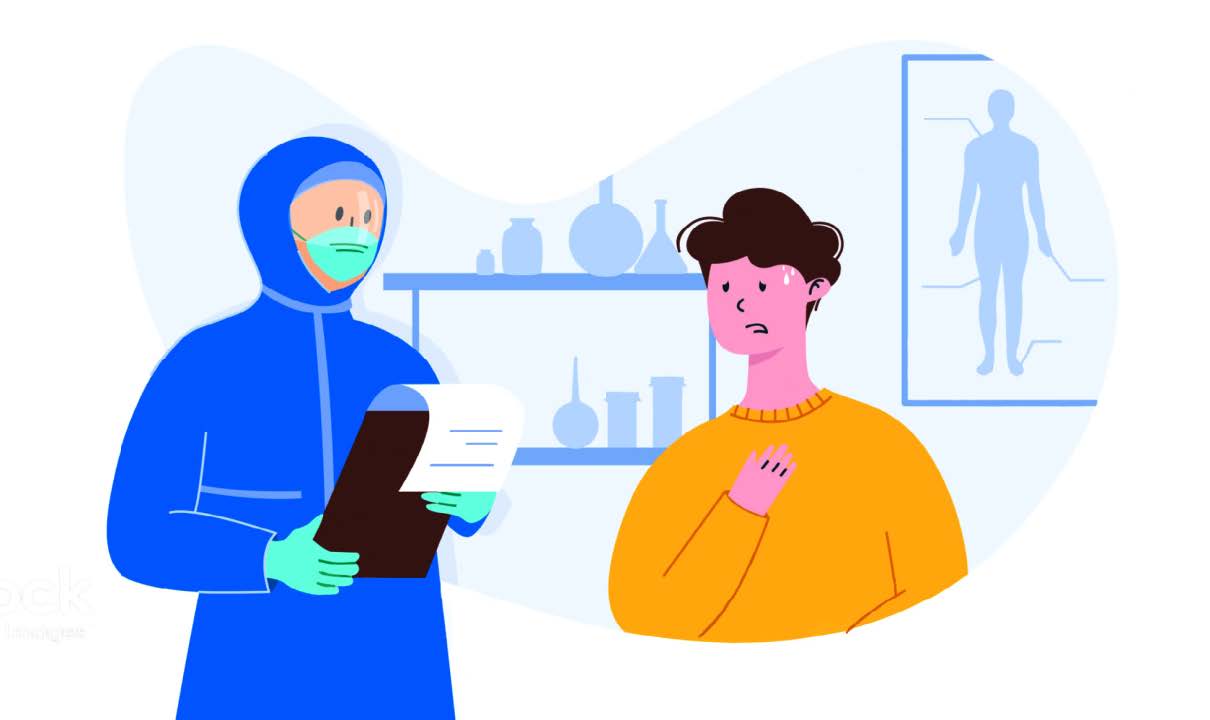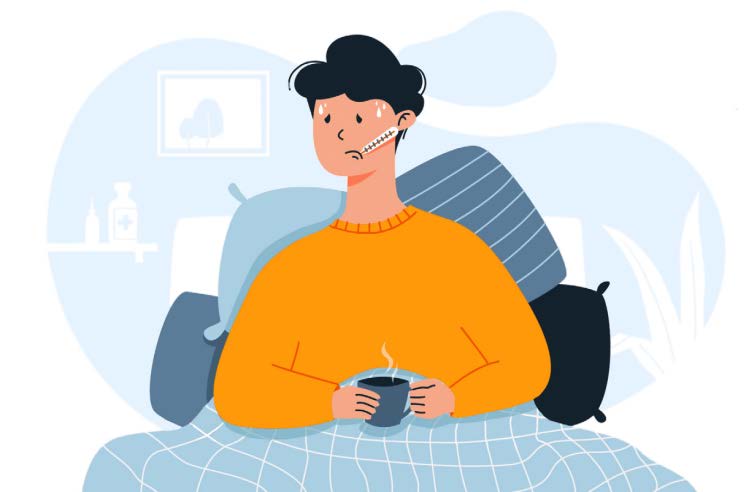COVID-19 AND PEOPLE WITH INTELLECTUAL AND DEVELOPMENTAL DISABILITIES
"Although some may continue to devalue the normal healthy lives of people with IDD, thoughtful, caring, and ethically-minded health care providers have sought strategies that attempt to treat all patients using the same set of rules."

BY STEPHEN SULKES, MD
The COVID-19 epidemic is affecting everyone, worldwide, whether it is from the disease itself or the profound effects that prevention efforts are having on our lives. For people with Intellectual and Developmental Disabilities (IDD), the impacts are often even more substantial.
Specific Health Risks
Many conditions that result in IDD increase the risk of severe respiratory illness associated with COVID-19 infection. Although data from the Centers for Disease Control and Prevention (CDC) do not specifically identify people with IDD in their reporting so far, Special Olympics International has begun to work with the CDC to add this measure to their surveillance. As of this writing, CDC reports that about 14% of people hospitalized with COVID-19 have "neurologic disease," which also encompasses people with strokes, dementia, and other acquired conditions. Data from New York state reported in the New York Times (4/8/20) were that 1,100 of the 140,000 served by the State's developmental disability system had tested positive for coronavirus, and that 105 had died from it, a mortality rate of 9.5 %, compared to about 2% in the general population. Many group home residents were displaying symptoms but had not been tested, according to New York Disability Advocates.
People with Down syndrome, for example, often have differences in immune function that often put them at higher risk for catching all kinds of infections, and at greater risk of fighting them once caught. They may also have other health problems, such as congenital heart disease or malignancy that increases the impact of coronavirus infection.
Another condition often associated with both congenital heart disease and immune system problems is the 22q11.2 deletion syndrome (which goes by many names, including DiGeorge, Velocardiofacial, and Shprintzen syndrome). People with both of these syndromes may also have upper respiratory anatomy differences that predispose them to respiratory infections. People with cerebral palsy may have mobility limitations or orthopedic challenges like scoliosis that impede their ability to fight off respiratory infections in particular. The same is true for many with spina bifida.
People with IDD and more severe physical disabilities may be at baseline risk for respiratory infections due to aspiration of oral or stomach contents. Such individuals may present with cough, fever, and respiratory distress that resembles COVID-19 infection enough to bring them to medical attention, only to result in virus exposure from other sick patients at the Emergency Department.
In addition to all these specific risks, people with IDD are more likely to be obese due to conditions like Prader-Willi syndrome, inactivity, diet problems, or the effects of medication on appetite. We have learned that (along with the diabetes and hypertension that often accompany it) is another frequently associated risk factor for mortality with COVID-19.
The Challenges of Testing
People with IDD often only have COVID19 testing when they present to medical settings. People with IDD have difficulty reporting their symptoms and may not meet criteria for testing. Sadly, many health care providers lack necessary knowledge to appropriately serve a person with IDD, and some may have attitudes that lead them to devalue people with IDD as patients. Such limitations have resulted in longstanding difficulties with access to health care for people with IDD. Moreover, transporting an individual with possible symptoms, or even one who just might have been exposed, to a test site increases the risk for everyone involved in the process. Some individuals may be resistant to the nasal swabbing that is required, further impeding testing.
Behavioral Risks and Staying Safe
Staying Safe People with IDD sometimes have behaviors that increase their risks for catching and spreading respiratory viral diseases. We all have learned how hard it is to avoid touching one's own face—it is not hard to imagine that this would be even more difficult for a person who has limited understanding as to why this should be so. For many people wearing a mask is both a social challenge and a sensory one. Having one's face covered, particularly in a way that covers both nose and mouth, can make people feel claustrophobic. Some people, especially those with Autism Spectrum Disorders (ASD), have difficulty reading facial expressions, and this difficulty increases when only the eyes are visible. Others have hearing or speech impairments that make the vocal muffling that comes with mask wear even harder to understand or be understood.
People with IDD may also have difficulty with the technicalities of social distancing, such as estimating a distance of 6 (or, as some now suggest, 13) feet, or not shaking hands or hugging friends on encountering them. We also all thought we knew how to wash our hands and keep our environments clean before COVID-19, but doing so for 20 seconds, and wiping off possibly contaminated surfaces, have created a steep and unfamiliar learning curve in recent weeks that is even more challenging for many with IDD.
The Residential Challenge
Add the fact that many people with IDD live in group and other supported settings, and the challenges multiply. Cohorting people is a double-edged sword. On one hand, having people who have not been infected stay together can help them stay safe. On the other hand, if family, staff or other outsiders bring the virus into the residence, which they can do before even showing symptoms, everyone has a risk of becoming infected. In some places, when staff members test positive, they are assumed to have infected the whole house and are then asked to live in the residence if possible.

D0UBLE EXPOSURE: Many conditions that result in IDD increase the risk of severe respiratory illness associated with COVID-19 infection, and sadly, many health care providers lack necessary knowledge to appropriately serve a person with IDD, and some may have attitudes that lead them to devalue people with IDD as patients.
Isolation and its associated changes in routine can also result in behaviors emerging that were not present before the epidemic began. The changes in routine that we are all experiencing are often harder for individuals with developmental disabilities to understand, and they can act out in response to their frustration and anxiety.
Separation from friends and loved ones is another big source of stress for people living in residential settings. Not being able to have visitors, or even being forcibly separated from visitors due to physical distancing measures, is hard to understand. Even though video communication tools like FaceTime, Zoom, and WebEx allow facial and vocal contact, it's just not the same as an in-person interaction.
A policy statement has been developed to encourage hospitals to allow family and staff to be with patients with IDD and COVID19 when admitted, to improve the quality of care: static1.square- space.com/static/5cf7d27396d7760001307a44/t/5e9e1cbefc832d0a6866fed4/1587420352080 /Visitation-PolicyStatement.pdf
Ethical Challenges
At the time of this writing, there have not been reports of people with IDD being withheld ventilator support when needed. However, if we are unsuccessful at "bending the curve" and the need for ventilators outstrips their availability, this is a recognized risk. There is much variability among states, and even among hospitals, as to policy regarding prioritization of ventilator support. Although some may continue to devalue the normal healthy lives of people with IDD, thoughtful, caring, and ethically-minded health care providers have sought strategies that attempt to treat all patients using the same set of rules.
One proposed approach bases allocation of life-sustaining treatment on an individual's life expectancy. Such policies are very risky for the IDD population, since statistics for this group suggest significantly shorter life expectancies. However, the data that feed these statistics are flawed, since, at minimum, they merge together groups with complex associated health challenges like some of those mentioned above, with other people with IDD who are as healthy as their peers. Well-documented and longstanding disparities in health and health access for this population further skew life expectancy statistics.
Another approach advocates a "first come-first served" policy. Although this helps to circumvent the life-expectancy issue, peo ple with IDD may live far from health providers, particularly facilities in larger cities, and transportation challenges may keep them from getting to health centers as quickly as people who live closer.
AADMD has developed a policy statement that encourages individual consideration of health care concerns for people with IDD, independent of their developmental disability, but based on their specific personal baseline health status: static1.square- space.com/static/5cf7d27396d7760001307a44/t/5e94a57e52eaaf1bad4b70ac/1586800000891/Ventillator-PolicyStatement.pdf
How to Help
Be Informed: Many experts around the world are providing tools and tips to help differentiate COVID-19 infection from other conditions, and to help with strategies for prevention. The AADMD website is one source of information with links to resources specific to the IDD community: aadmd.org/coron- avirus-center
Take Control: All of us feel anxious and tense these days as we feel out of control of the world around us. We all do better when we do things for ourselves, rather than when things are done to us. Helping people to identify things that they CAN control reduces their anxiety and allows them to respond in the healthiest ways. Getting involved in safety activities is a great way to start. Everyone can help with cleaning and sanitizing their environments and equipment. Wipe down packages as they enter the home, participate in food preparation, and organize other activities for friends. Help make masks, as shown in the video starring Surgeon-General Jerome Adams: youtube.com/watch?v=tPx1yqvJgf4 Visual schedules can be helpful for people for whom the changes in daily routine are upsetting. One website with resources on creating visual schedules is: pbisworld.com/tier- 2/individual-visual-schedules Everyone's life is disrupted by COVID-19, and we worry about our own safety and that of those around us. Taking reasonable precautions, communicating with each other (even remotely!) and thinking about the unique needs of each individual will get us through to the other side of this epidemic. And think of what we're learning in the process! •
ABOUT THE AUTHOR:
Stephen Sulkes, MD, Professor of Pediatrics at Golisano Children's Hospital in Rochester, NY, is former Director of the University of Rochester Leadership Education in Neurodevelopmental and Related Disabilities (UR LEND) Program, and Pediatric Discipline Coordinator, and Co-Director of the Strong Center for Developmental Disabilities (SCDD), Rochester's UCEDD. In the latter role, he is a member of the New York State Developmental Disabilities Planning Council. He is Board Certified in Developmental-Behavioral Pediatrics and Neuro-developmental Disabilities. He is a Fellow of the American Academy of Pediatrics (AAP), and of the Society for Developmental-Behavioral Pediatrics. He is currently President of the American Academy of Developmental Medicine and Dentistry (AADMD), and he has been Treasurer of AUCD, and a board member of the Society for Developmental Pediatrics. Among other honors, he was named Golisano Health Leadership Award winner for North America by Special Olympics International in 2017.